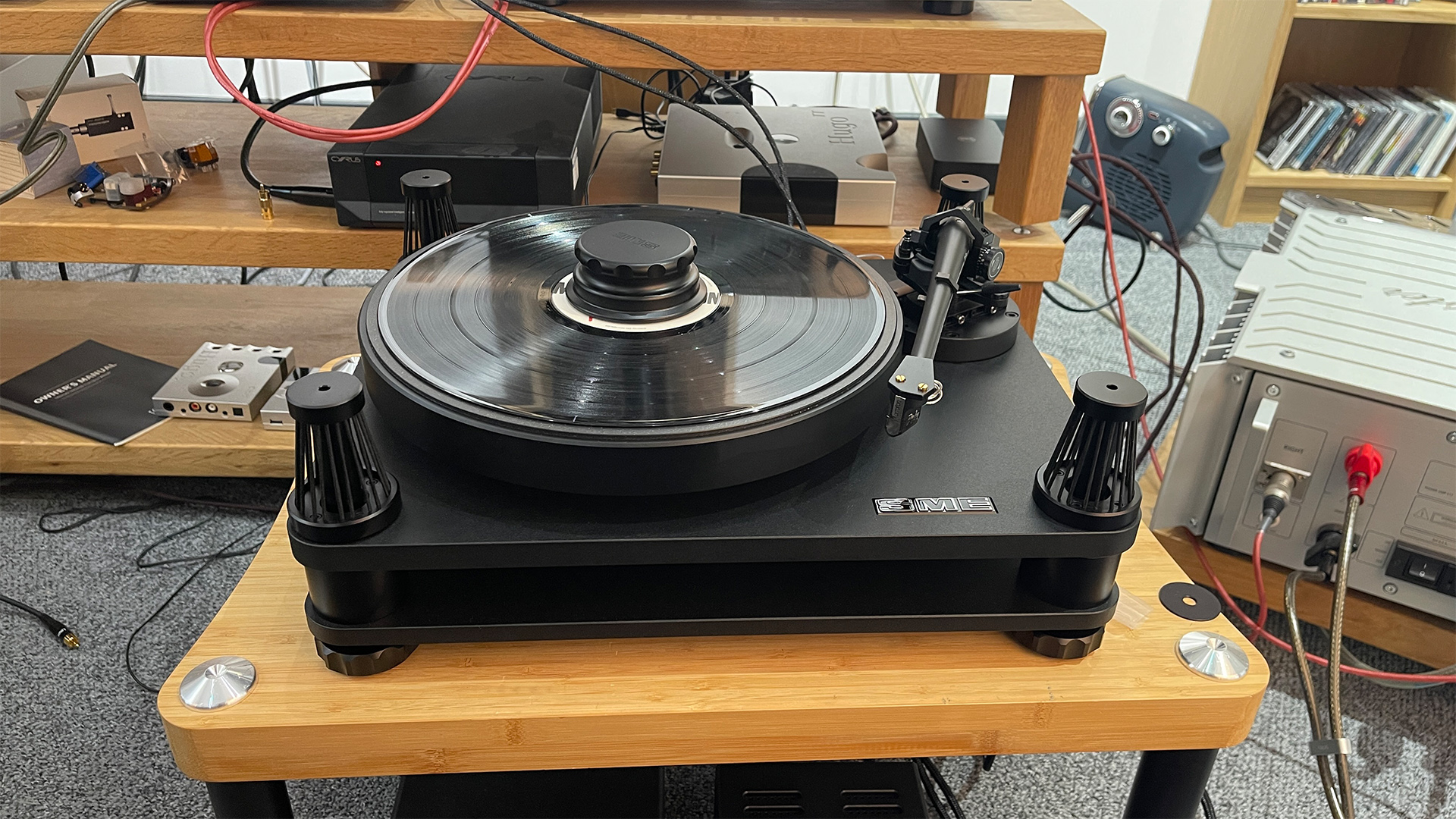What Hi-Fi? Verdict
The Model 20 Mk2/Series V is beautifully made and a pleasure to use. Its performance is as insightful as they come
Pros
- +
Honest and insightful performance
- +
Excellent sonic authority and control
- +
Class-leading build quality
Cons
- -
Price puts it beyond the means of most
- -
Needs care in partnering for optimal results
Why you can trust What Hi-Fi?
SME launched the Model 20 turntable back in 1992. The partnering tonearm on our review sample, the now legendary Series V, dates back even further to 1986. Since their respective launches, neither product has changed much bar the odd infrequent upgrade to the turntable’s speed controller and the recent move to an AC motor that prompted the switch to Mk2 status. It is a testament to the quality of original designs and the company’s famed engineering excellence that each of these products remains hugely competitive, despite their advanced years.
In the metal, the belt drive Model 20 Mk2 turntable looks small by price standards. Don’t let that fool you. This deck weighs in at a hefty 26kg, largely thanks to the two 16mm thick slabs of premium-grade aluminium that form the bulk of the chassis. A chunky motor housing sits on the lower layer while the upper supports the main bearing, platter and tonearm. This top plate is isolated from the rest of the Model 20’s structure by a total of 40 rubber ‘O’ rings shared equally between the four corner posts. That’s not all. This top layer is also fluid-damped to control unwanted movement and resonances. The design is impressively effective at isolating the record/stylus interface from external disturbances and any mechanical vibrations generated by the motor.
Design & engineering
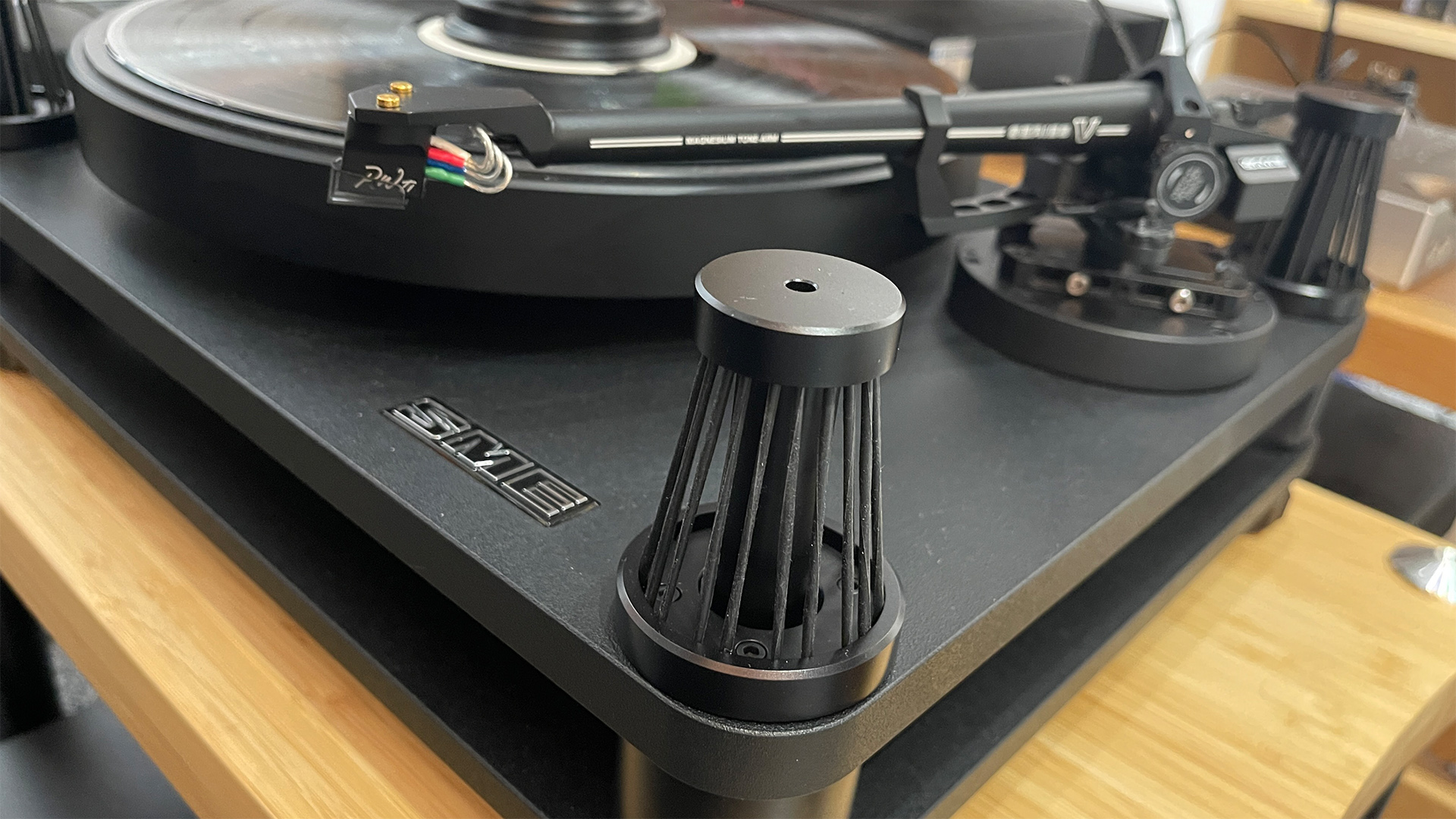
Each corner post has adjustable feet to level the deck on slightly uneven surfaces. These feet are also mechanically decoupled from the main chassis, which adds to the Model 20’s already enviable ability to reject vibrations from its support. Good as the SME is in this respect, and compared to most rivals it is truly excellent, as with every record player you will still get the best performance when it is placed on a solid, level, low-resonance support positioned as far from the speakers as possible.
The main bearing spindle is 19mm in diameter, and precision machined from high chrome tool steel. It is supported in sealed housing using generously specified sintered bronze bearings. The hefty 6.5kg platter is machined from aluminium alloy and strategically damped with a ring of Isodamp, a material used for damping in the aircraft industry. A layer of Isodamp is also bonded to the top of the platter and diamond-turned to create a textured, fibrous interface to support the record. This looks and feels considerably classier than the usual felt mats we normally come across. A large and beautifully made record clamp completes the assembly and screws down firmly on the record to ensure solid contact with the platter surface and a degree of flattening for warped discs.
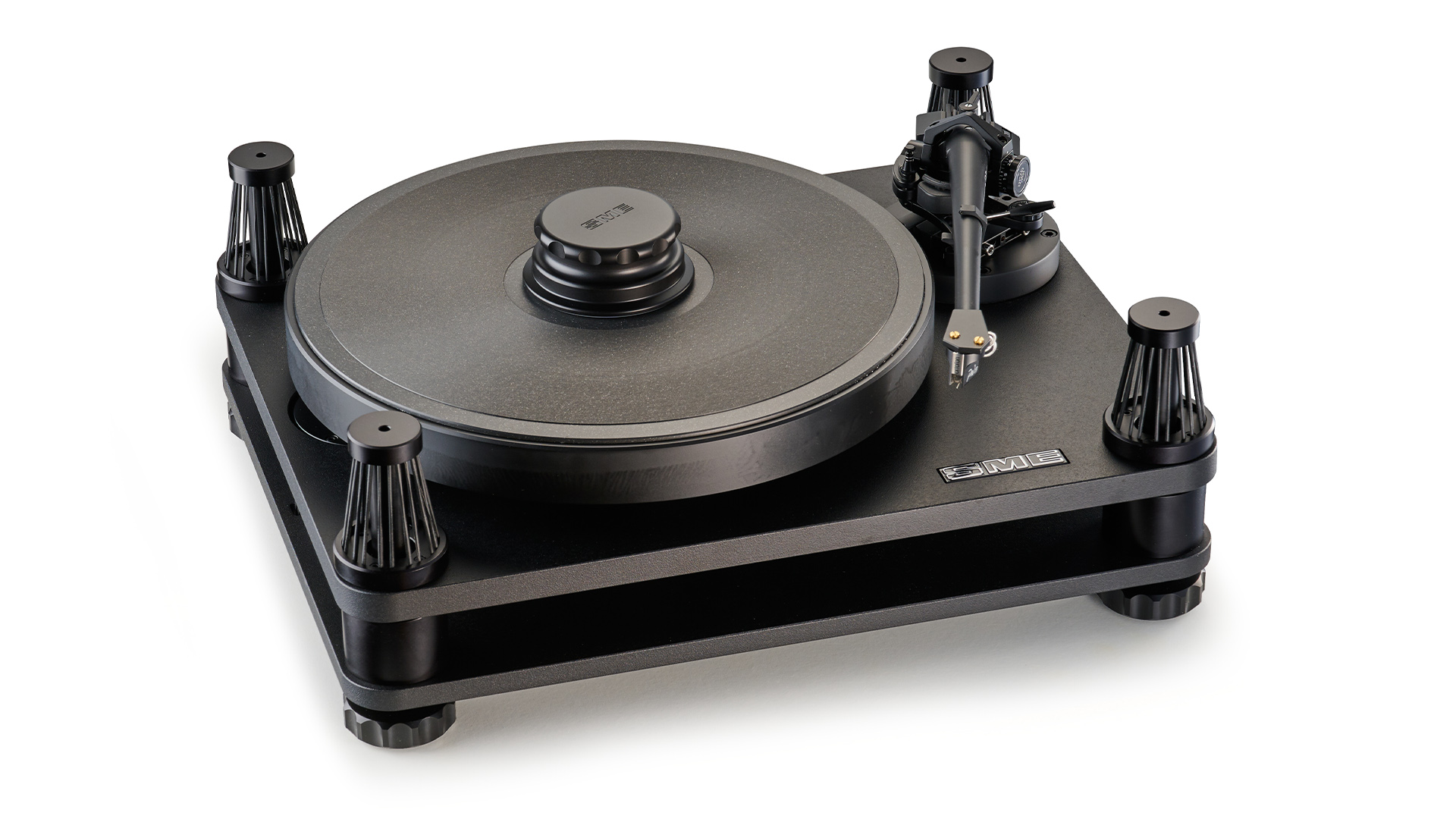
Type Belt drive
Operation Manual
Speeds 33⅓, 45rpm
Speed change Electronic
Cartridge Ortofon Windfeld Ti MC (optional)
Phono stage? No
Bluetooth? No
USB? No
Dimensions (hwd) 17.5 x 44 x 35cm
Weight 26.7kg
Finishes x 1 (black)
Excellent speed stability is essential for good record replay and SME has taken no chances here. The AC motor is custom-made and is governed by a sophisticated new speed controller. This controller makes it easy to shift from 33 ⅓ to 45 RPM and unusually allows the user to make subtle adjustments to the rotational speed in increments of +/- 0.01%. SME even provides a classy strobe disc for this purpose.
The control unit’s case is largely made of polymer resin that is CNC-machined from a billet, with the front, base and rear panel made of aluminium. It feels solid and substantial in use. The speed controller’s mains transformer is housed in a separate box with a 2m lead to minimise the sonically degrading effects of vibration and the risk of stray magnetic fields interfering with any of the signal cables.
SME’s Series V tonearm is rightly considered a legendary design. It was revolutionary when it was introduced all those decades ago thanks to its tapered, one-piece pressure die-cast magnesium arm tube. While that’s still impressive, other aspects of the design also deserve praise. We love its reassuring solidity and the feeling of smooth precision in use. It is so easy to set up thanks to the sledge arrangement that makes cartridge alignment a breeze and the precise way tracking and bias can be set. In our experience, few high-end tonearms come anywhere near the Series V in how good they feel to use. The design hasn’t changed in almost 40 years for a reason; it is so good in most respects that it didn’t have to.
Build
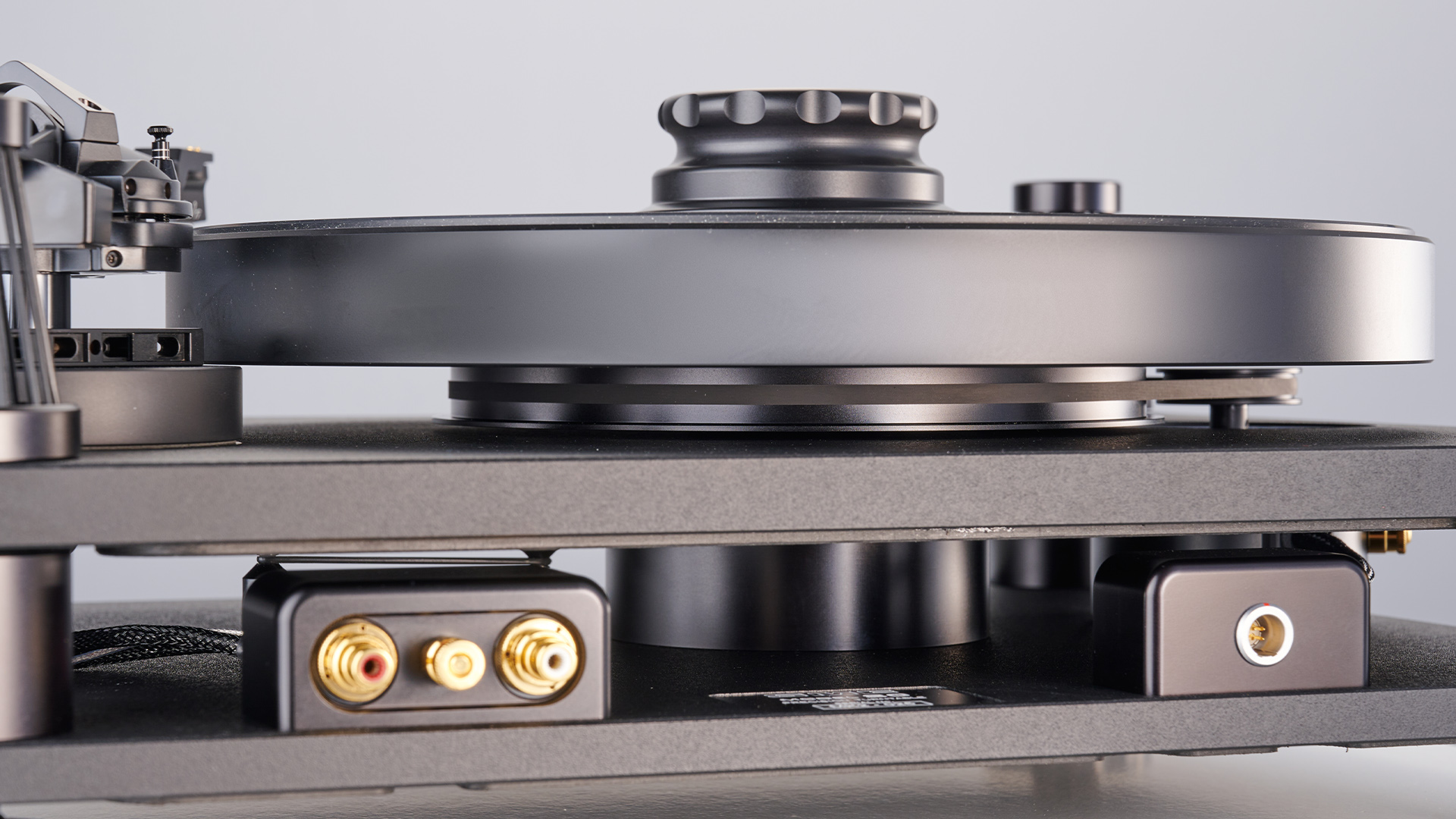
We have been fortunate enough to visit the SME factory in Steyning, near the south coast of England. The highlight of our visit wasn’t all the sophisticated and massively expensive machinery, though that is hugely impressive, but the people who work there. In most cases, they have worked at the company for years, if not decades, and they all talk about the no-compromise ‘SME way’ of making things. Quality is ingrained in the company culture, and that shines through in the products, and their prices.
Examine the Model 20 Mk2/Series V combination and you will find that it is immaculately made. Fit and finish are exceptional and there is an aura of reassurance and solidity that no rival we’ve tested can match. This record deck feels like something built to last a lifetime and then passed down to future generations. Finish options? As standard it is available in a black finish only. Darth Vader would be happy.
SME doesn’t make cartridges, so we asked it to equip our review sample with something suitable. The company chose to fit Ortofon’s Windfeld Ti moving coil (£4399 / $5999 / AU$7199), which is a relatively low output cartridge (0.2mV output @1kHz, 5cm/sec) but known for its convincing tonality, insight and precision. It tracks securely at the recommended 2.3g tracking force and generally works superbly. The Windfeld Ti cartridge is a great choice, though if you favour a richer tonal balance or have musical tastes that favour muscularity over sophistication, look elsewhere.
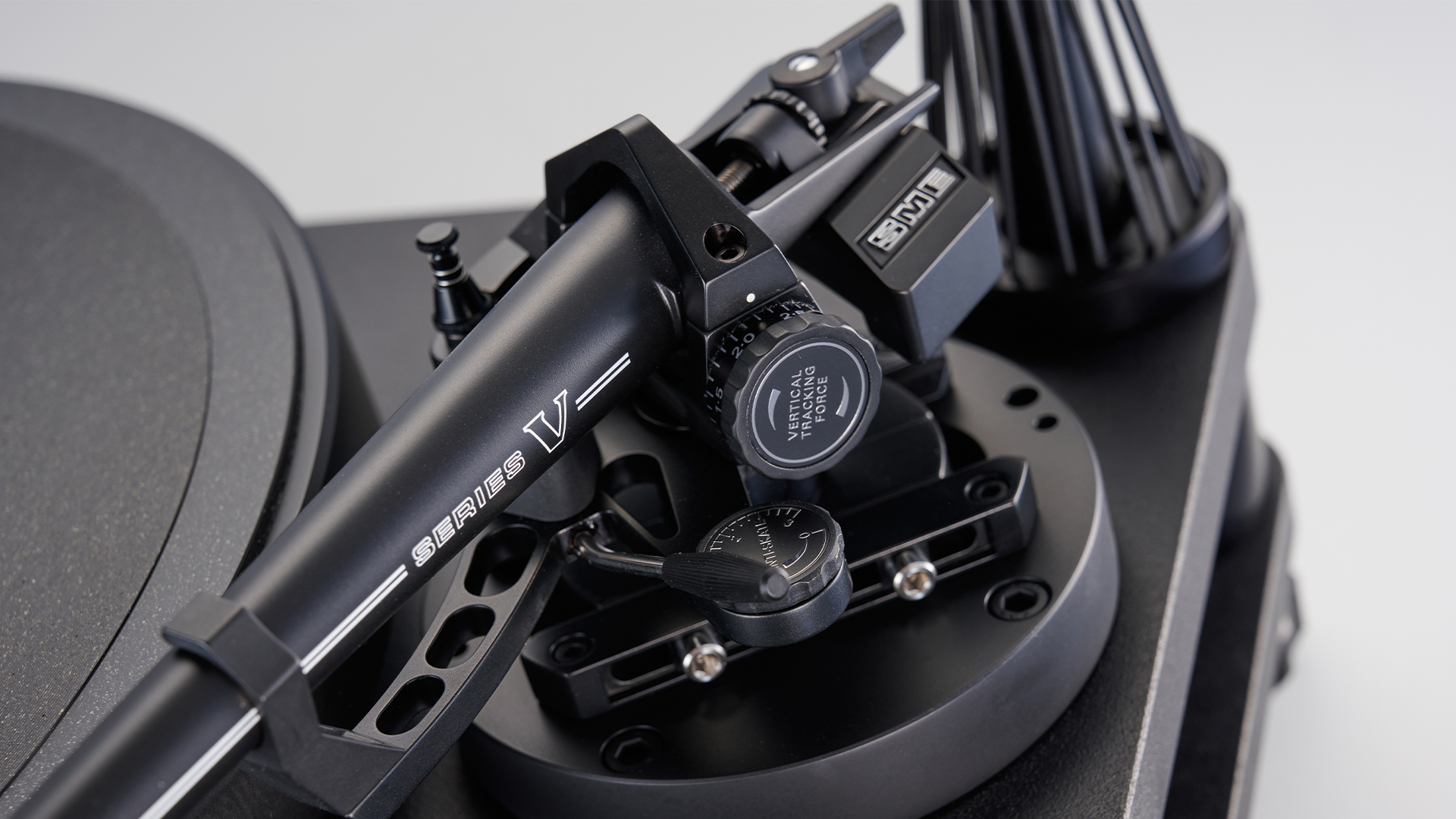
Once properly set up, the Model 20 Mk2/Series V is a pleasure to use. It spins up quickly and quietly, and every touch point from the speed controller buttons to the arm lift/lower lever feels substantial. The carefully damped sub-chassis doesn’t wobble around in the manner of conventional sprung designs such as the Linn LP12, and so proves as undemanding to use as the likes of the Rega Naia.
Any source component at this level positively demands a top-class partnering system we spend most of our test sessions with the Model 20 connected to our reference Burmester 088/911 MkIII amplifier (fitted with an MC phono module) and ATC SCM 50 speakers. We swap the ATC with Wilson Benesch’s Discovery 3Zero standmounters for part of the review process to gain an alternative perspective.
Sound
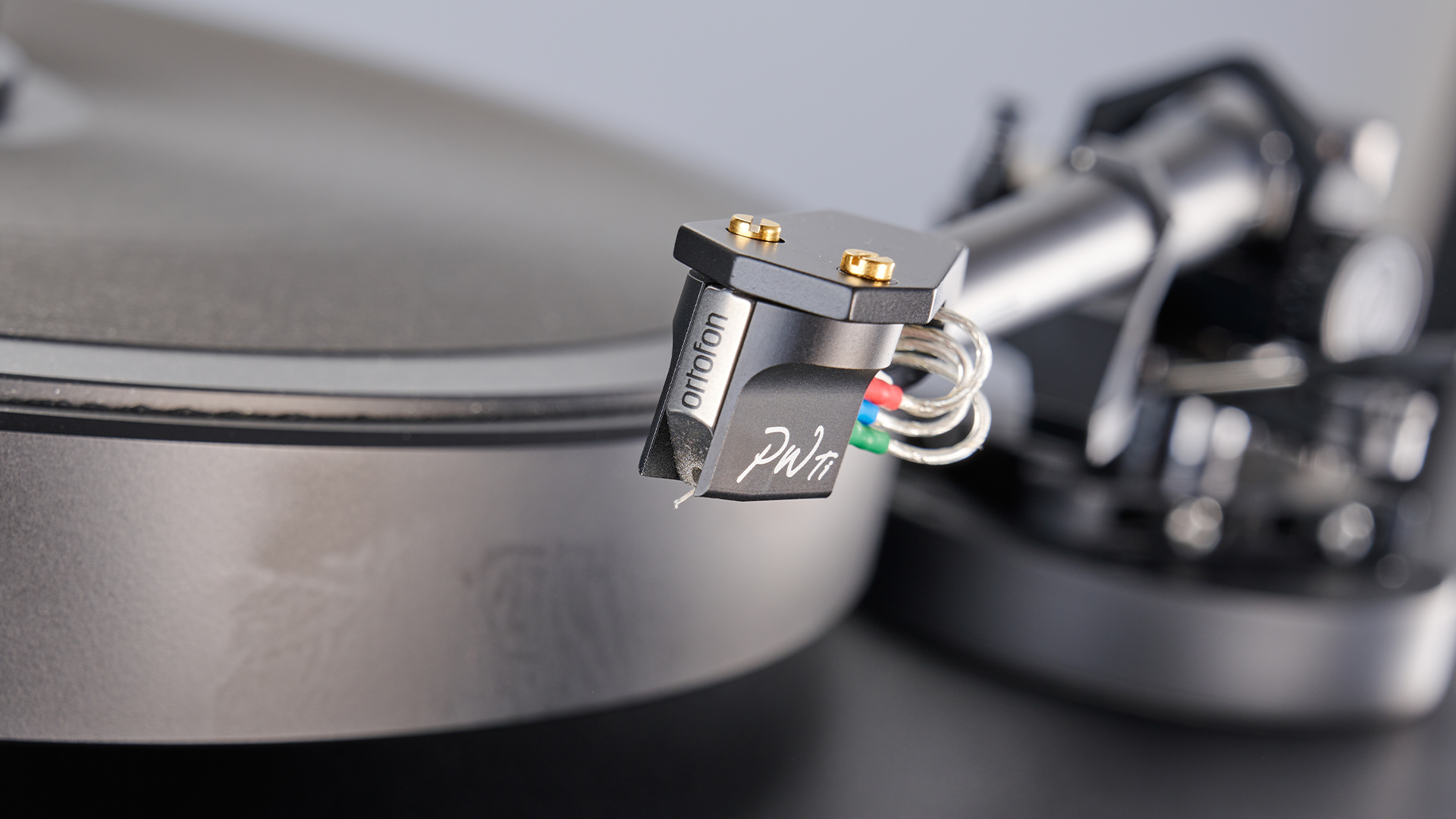
SME has a house sound that has been present in every record player we’ve heard from the brand. The sound is about control, stability and resolution. This is not a record player that embellishes a recording, and at times could certainly be accused of prioritising analysis over entertainment. Yet, despite that, it is never less than an engaging listen.
Our copy of Michael Jackson’s Thriller is well-worn and now sounds a little thin and edgy, and that’s exactly how it comes across with the SME. Yet, listen past these limitations and you will find that the deck resolves an exquisite amount of detail and then organises it into a wonderfully cohesive and musical experience. It puts a magnifying glass onto the production in a way that makes us marvel at the attention to detail that producer Quincy Jones and engineer Bruce Swedien put into the recording.
Thankfully, it isn’t all about analysis. The SME communicates the irresistible drive of Wanna Be Startin’ Somethin’ with enthusiasm and pounds out the hard-charging rhythmic track with real conviction. There is plenty of punch, and the ability to keep composed even when the music becomes frantic. Jackson’s voice comes through with passion, the SME rendering every whoop, grunt and vocal tick with utmost clarity. Bass is as taut as you like, combining articulation and power convincingly.
We are curious as to the difference the Model 20’s record clamp makes. After going back and forth it doesn’t take long to decide that its use is essential. Take it away and the sound loses precision and focus.
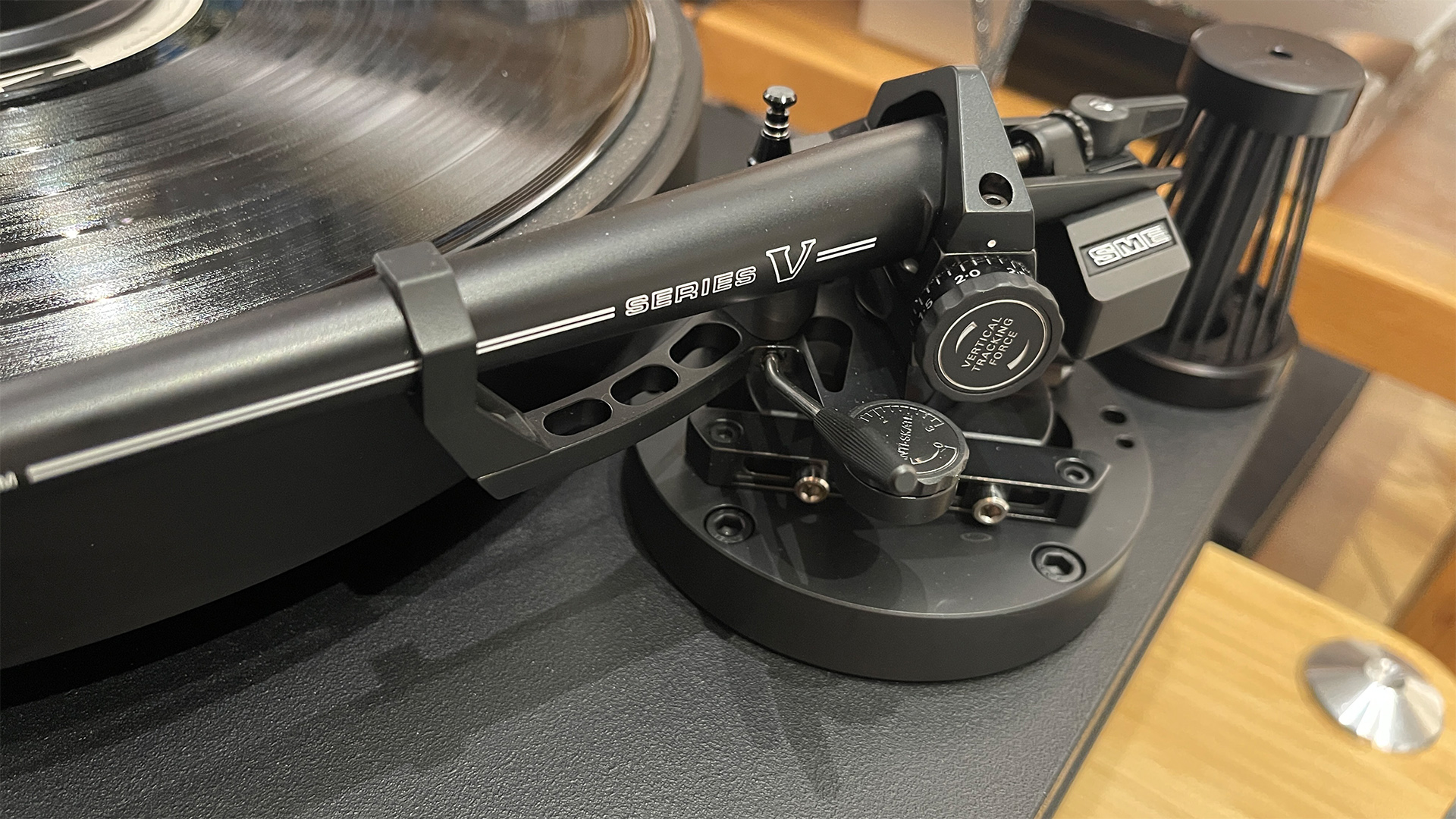
The Model 20’s transparency is highlighted when we switch to Orff’s Carmina Burana. The soundstage grows massively, giving a firm sense of the recording venue’s scale. The stereo imaging is as stable as it gets with the orchestra and massed choir firmly planted in place. There is never a hint of stress or loss of focus even as the music becomes dense and demanding. Dynamics are explosive and delivered with breathtaking impact. There is a palpable feeling of power here, and the kind of authority that one rarely hears, even at this level.
A cartridge largely dictates the tonality of a record player. The Ortofon Windfeld Ti is about as even-handed as they come, delivering voices and instruments in a natural way. That said, if you partner this cartridge poorly it wouldn’t be hard to make it sound a little thin and lacking in body. We would expect the selling dealer to advise on the specifics. Make sure that the partnering phono stage has enough gain and quality to cope with the Ortofon’s relatively low output, too.
Verdict
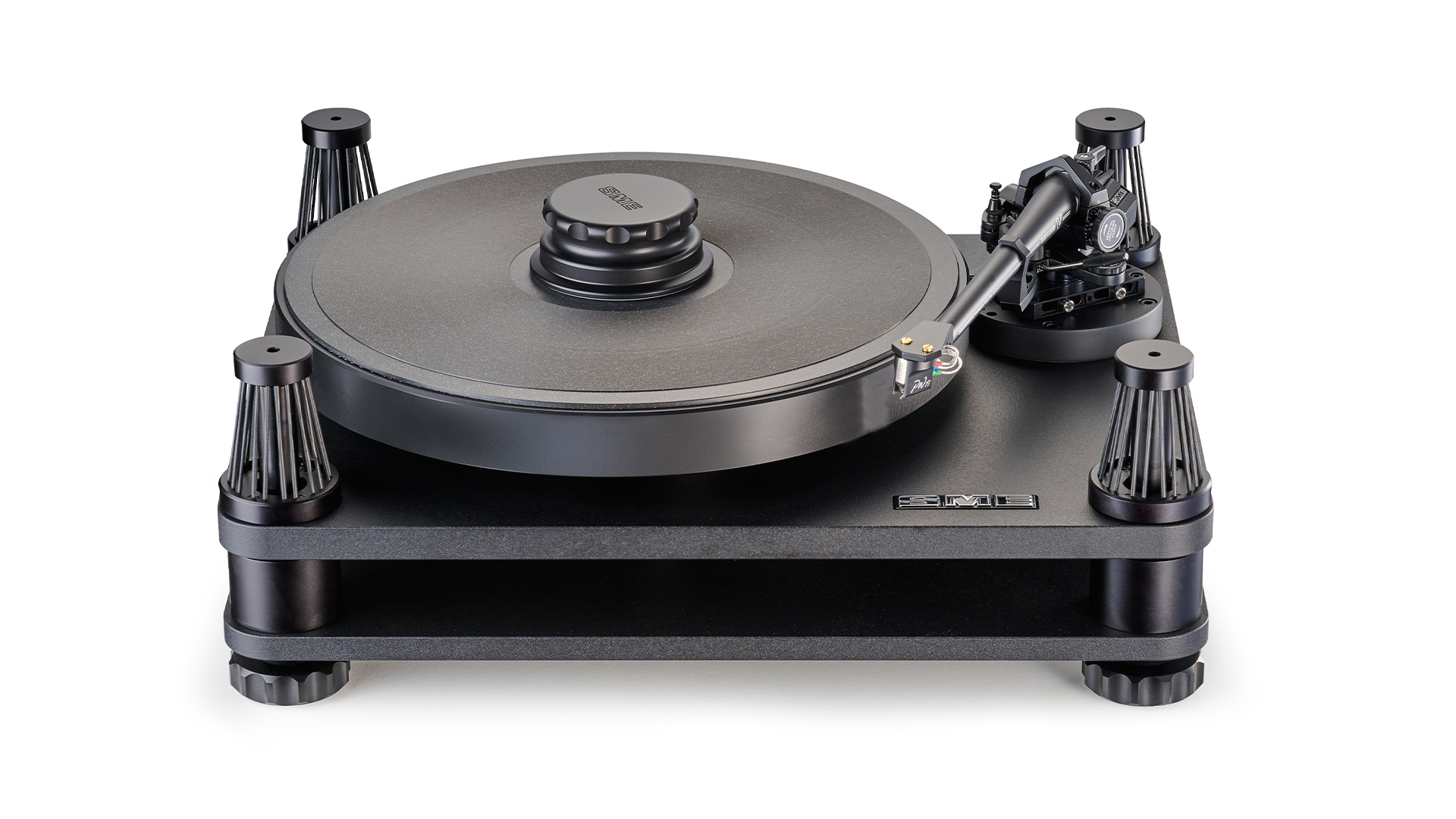
We really enjoy our time with the Model 20 Mk2/Series V/Ortofon combination. It sounds at home across all musical genres, delivering the grit of Bruce Springsteen’s Born To Run set as convincingly as the rhythmically dense electronic music of Four Tet. Compared to rivals such as Linn’s LP 12 Klimax its sound could be considered a little aloof and inclined towards informing rather than entertaining.
You know what? We think that’s the way SME likes it. The company sees it as the music’s job to entertain and the record player’s job only to convey the recording as accurately as possible. Given just how good the SME Model 20 Mk2/Series V sounds, it is hard to argue against that.
SCORES
- Sound 5
- Build 5
- Features 5
MORE:
Read our review of the Linn Klimax LP12
Also consider the Vertere MG-1 Mk II/Mystic MC
Read our Rega Naia review
Best high-end record players: ultimate premium turntables tested by experts
What Hi-Fi?, founded in 1976, is the world's leading independent guide to buying and owning hi-fi and home entertainment products. Our comprehensive tests help you buy the very best for your money, with our advice sections giving you step-by-step information on how to get even more from your music and movies. Everything is tested by our dedicated team of in-house reviewers in our custom-built test rooms in London, Reading and Bath. Our coveted five-star rating and Awards are recognised all over the world as the ultimate seal of approval, so you can buy with absolute confidence.
